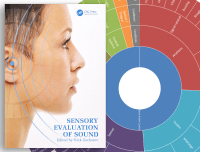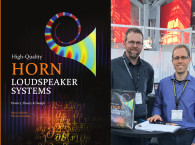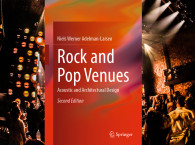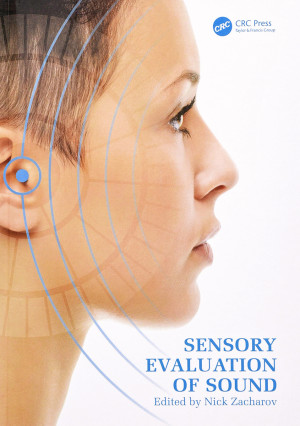 The field of acoustics is very broad. Many of my clients equate acoustics with sound reinforcement. Others include architectural acoustics. But these sub-fields in themselves include yet other subdivisions: human hearing, perceptual acoustics (also called psychoacoustics), electroacoustics, noise control, and more.
The field of acoustics is very broad. Many of my clients equate acoustics with sound reinforcement. Others include architectural acoustics. But these sub-fields in themselves include yet other subdivisions: human hearing, perceptual acoustics (also called psychoacoustics), electroacoustics, noise control, and more.A recent category of interest in acoustics is variously identified as soundscapes, product sound quality, and sensory evaluation of sound. When I first joined the North Carolina regional chapter of the Acoustical Society of America (ASA), I expected to learn a lot about architectural acoustics. I did, but I also learned a good bit about the sub-fields just mentioned, plus animal acoustics and other even less well-known disciplines. Other than the journals of the various acoustical societies worldwide, there have been few references for many acoustical disciplines.
Sensory Evaluation of Sound, edited by Nick Zacharov, provides a comprehensive reference on aspects of sound that directly affect us all. The list of contributors to this volume includes many names that are familiar to those in the field of sensory evaluation, but perhaps not so familiar to the general public. However, the information they supply, and the research they report, are of the highest quality.
The vast contents in the book include an introduction to the field of study that bridges physical measurement and human perception, helping us to improve product design and aural environments. This is followed by several chapters that deserve an explication:
Why sound matters — Sound is employed in human communication and entertainment; but more than that, it surrounds us all the time, affecting our health and mood, as numerous studies have shown.
Sound, hearing, and perception — Sensory evaluation of sound begins with an understanding of sound and audio, including human hearing, psychoacoustics, spatial hearing, human perception of music and speech, and hearing impairment.
Theory and Practice of performing sensory evaluation — Numerous test methods and protocols have been developed for sensory evaluation of sound. The data from testing is usually analyzed using univariate or multivariate statistical methods.
Applications in telecommunications — Sensory evaluation of sound was initially developed to enhance speech communication via telephones, and continues to be used to enhance speech quality and intelligibility.
Hearing aids — The World Health Organization reports that 5.3% of the world’s population is affected by some degree of hearing disability, and a variety of hearing aids have been developed to assist people thus affected. Optimizing hearing aid design involves careful sensory evaluation of product quality and usability.
Car audio — Reproduction of sound in cars involves the acoustics of the vehicle cabin and design of suitable reproducing equipment, including ongoing sensory evaluation of the system performance as perceived by humans.
Binaural spatial reproduction — Despite the ubiquity of loudspeakers in sound reproduction, binaural technology is the approach that most nearly approximates a real-life condition for experiencing sound, since it presents the complete audio signal with spatial information, uncontaminated by the acoustics of the listening space.
Concert hall acoustics — At least since Wallace Sabine’s pioneering work on architectural acoustics in the early years of the 20th century, concert-hall sound has been a primary focus of acoustical research. Especially since the middle of that century, sensory evaluation has led to identification of parameters that must be considered in the design and optimization of concert halls.
Emotions, associations, and sound — The emotional effects of sound, particularly music, have been known by all cultures throughout history, but through sensory evaluation studies we have made our understanding more objective, specific, and
predictive.
Audiovisual interaction — In an audiovisual presentation such as a movie, the aural and visual components interact, each affecting the other as a unified experience is created for human consciousness. Sensory evaluation is beginning to help us understand this interaction, with the result that higher-quality presentations can be developed.
All these topics are covered in Sensory Evaluation of Sound, with enough background to facilitate understanding, although the clear focus of the book is not on the phenomena, but on their evaluation using the human senses. As Zacharov points out in the foreword, there has been a long-standing disagreement among audio professionals and audiophiles concerning the sufficiency of technical measurements for determining whether an audio system or piece of equipment sounds good. This disagreement is at the heart of discussions concerning the relative merits of tube versus transistor equipment, vinyl versus digital sound recordings, .wav versus MP3 sound-file coding, and so forth.
In the early days of “high fidelity” sound, the usual evaluative approach was to compare the sound of a well-recorded symphony orchestra to that of the recording played on the audio system under investigation. Of course, such an approach is plagued with multiple unavoidable extraneous variables. Nor is it applicable in evaluating either live-sound systems or systems used to reproduce recordings of electrically/electronically created music, for which no acoustical original exists to which the playback can be compared. The science of sensory evaluation provides a set of scientifically grounded approaches to use in the design and comparison of audio systems and other devices that make sound.
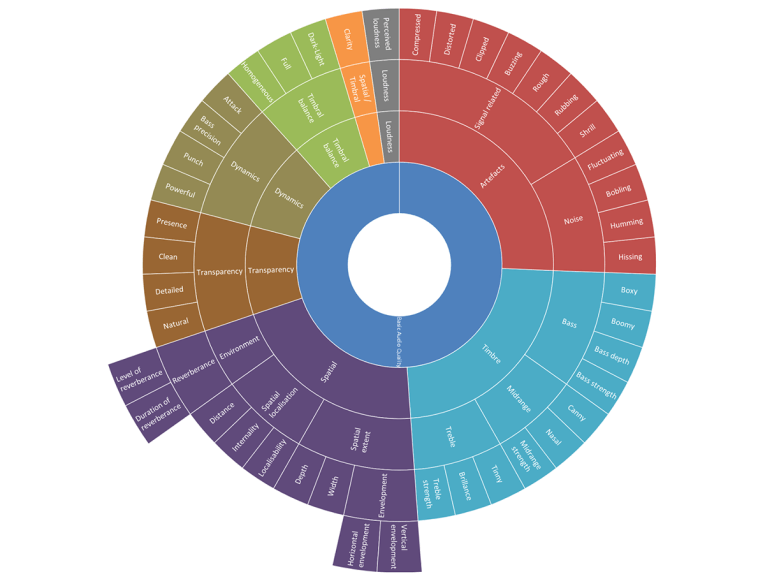
There is not enough space in this review to thoroughly discuss all the topics included in this extraordinarily comprehensive tome, but two examples should suffice. One sub-field of acoustics in which sensory evaluation has often been applied is concert hall acoustics. Although W. C. Sabine is most noted for his pioneering work in identifying, measuring, and predicting the effects of reverberation on an audience’s appreciation of speech and music, he also mentioned sufficient loudness, adequately flat frequency response, clarity, and distinctness of articulation, and freedom from noise as essential to good auditorium acoustics.
Over the years, many other attributes of good concert-hall acoustics have been identified, defined, and studied. The resulting research reveals the importance of intimacy, diffusion, balance, blend, ensemble, definition, brilliance, muddiness, hardness, low-frequency balance, high-frequency balance, presence, and envelopment in various known-good and less good halls.
In the ISO standard 3382-1 (2009), the overwhelming list of parameters has been distilled into five: subjective sound level, perceived reverberance, perceived clarity, apparent source width, and envelopment. This codification of parameters important to audience perception is a prime example of careful application of the sensory evaluation methods presented in Zacharov’s book.
One important aspect of experiencing a live or recorded musical performance is the evoked emotions. Although nearly everybody recognizes that “music hath charms to soothe a savage beast” — or to calm or excite a human — not many people have any idea that the topic is accessible to scientific study. An excellent discussion of the emotional effect of music can be found on the surprisingly serious video by comedian Bill Bailey at: www.youtube.com/watch?v=AcPTFXzh0LQ. But few print resources are available; the only one that comes to mind is Kay Gardner’s Sounding the Inner Landscape.
The author of Zacharov’s Chapter 13, Jasper Ramsgaard, makes it clear why there is such a dearth of information relating music to emotions. First of all, there is no generally accepted definition of “emotion.” To compound the problem, the terms “preferences,” “feelings,” attitudes,” and “moods” are often used as synonyms for “emotions,” although their meanings are not the same. By discussing categorical and dimensional models of emotions, direct assessment and self-reporting, and physiological and neuro-imaging techniques, this chapter sheds welcome light on this very important topic.
Anyone interested in sound from an amateur or professional perspective will find this book a valuable addition to his or her library. aX
Sensory Evaluation of Sound
Edited by Nick Zacharov
Publisher: CRC Press,
First Edition
December 2019
Hardcover: 578 pages
This article was originally published in audioXpress, February 2020.



